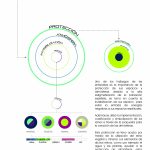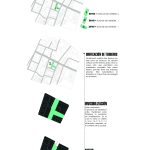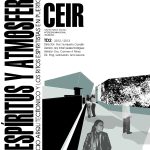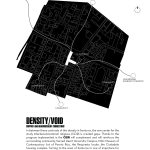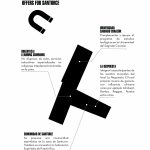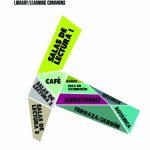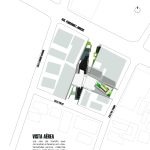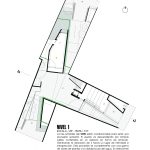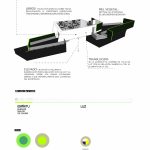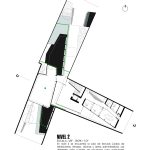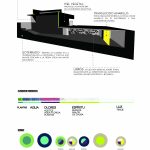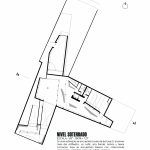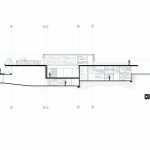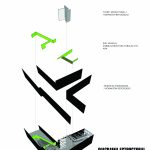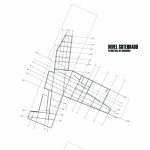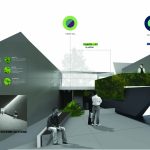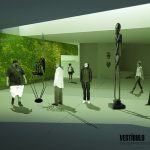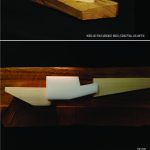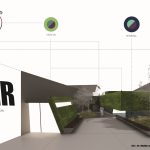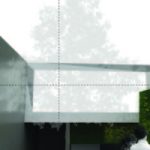Of spirits and atmospheres: architectural space and spiritualistic rites in Puerto Rico
““
Designer: Néstor Lebrón González
Posted on TOS: Summer 2013
Thesis Director: Prof. Humberto Cavallin
Consultants: Edwin Quiles, Arch.; Carmen A. Pérez Herranz, PhD
Thesis: UPR March May 2013
Location: Santurce, Puerto Rico
TOS[er]: 11:11
Posted: Summer 2013
Nestor’s Quest: The African influence in Puerto Rico – its many forms and expressions – tends towards invisibility. There is no denying that the cultural and social reality of Puerto Rico is heavily influenced by its African heritage. This influence is both visible and invisible; the latter occurring in the realm of religious syncretism. A term often used in social sciences, invisibility, is a concept that refers to a series of strategies that obliterates certain cultural presences of particular social groups. Invisible processes particularly affect social groups subject to relations of domination, such as, minorities, non-European groups, women, people who do not have light skin, etc. Invisibility methods are closely related to processes of imposition of the superiority and dominance of one social group over another, such as, racism, sexism, euro-centrism, homophobia, xenophobia, and, discrimination processes in general.
The particular issue of interest is the invisibility of minority social groups, defined by racism in Puerto Rico, specifically, what is seen (or not seen) the black community. Puerto Ricans often question whether there are blacks on the island and if they a subject to racism. There is an Afro-Puerto Rican presence inherent in many aspects of our daily lives, whether in what we eat, how we dress, in how we speak and the music we listen and dance to. The local architecture is no exception to the processes of invisibility. It seems necessary to inquire and investigate the existence and realization of religious syncretism in architectural spaces of the island’s spiritualism.
Once African religious syncretism transcends time and place it creates a need to appropriate spaces to accommodate the manifestation of its rituals. Home, is the place where every day rituals merge with religious practices generating a syncretism between architecture and religion. These socio-spatial expressions begin to impact the spaces in the home, transforming and reconfiguring them to the point of acquiring new meaning.
Getting to know the practice of religious syncretism in Puerto Rican homes, will help us understand and decipher their vision of space and how it is transformed into a meaningful place. Setha M. Low and Lawrence Zuniga, in the introductory chapter of their book, The Anthropology of Space and Place: Locating Culture, also explain the interest of the transformations and perceptions of space:
We are interested in how people form meaningful relationships with the locales they occupy, how they attach meaning to space, and transform ‘space’ into place ‘. We are interested in how experience is embedded in place and how space holds memories that implicate people and events. […] The use of narrative to inform the anthropological understanding of place focuses on local populations details of how construct perceptions and experience place.
Therefore, we can generate a multitude of symbolic spatial configurations depending on the users, the space, and, their religious practices. Perception of domestic spaces sheds its original meaning and assumes new functions and programs; to then generate a transaction between user and space to strength the process of religious syncretism.
What is spiritualism?
Allan Kardec’s definition of spiritualism is:
The science that treats the nature, origin and destiny of Spirits, as well as, its relations with the world body.
He also states that:
A livable unites the mysterious link to the invisible. Our destination is developed on the great chain of worlds, and results in the gradual growth of life, intelligence, and sensitivity. But the study of the occult universe is not without difficulties. There, as here, the good and bad, and right and wrong, are mixed, depending on the degree of evolution of the spirits with who we are in relationship. Hence, there the need to address the field of experimentation with extreme caution after preliminary theoretical studies. Spiritualism is the science that regulates these relationships. It teaches us to learn at attracting, to use the beneficent forces of the invisible world, to catch the bad influences and at the same time, to develop the hidden powers, the powers ignored sleeping at the bottom of every human being.
These religions represent a heritage that reaches us through multiple contexts and conditions, some known and investigated, others unknown. Maybe we will never know the exact complexity that characterizes syncretism. Although religions usually split and create intangible boundaries this intersection of spiritualism and space promotes unity, expands places and overlaps areas without restraint.
Beliefs:
- Existence of a Supreme Being
- Plurality of inhabited worlds
- Pre-existence and survival of the spirits.
- Reincarnation
- Mediumnity
Main Characteristics:
- service and CHARITY
- no discrimination on CLASS, GENDER and SEXUAL PREFERENCE
- recognized as a COMMUNITY
- perceive and recognize that they are STIGMATIZED because of their beliefs
Spiritualist community interviews:
The interviews gradually revealed invisible spaces. Although it was not an easy task to discover spiritualist centers in Puerto Rico due to high stigmatization. The spiritualists transform and work in their spaces fully aware of this stigma. They deliberately avoid disturbing the neighbors with the sounds that occur in spiritualistic practices and rituals. They prefer not to be visible to avoid bad vibes and negative energies that affect their spaces and spiritualist centers; in recognition of the lack of knowledge about spiritualism that can generate this unwelcome energies. But, despite this condition of invisibility, spiritualism remains strong and alive in the “invisible corners” of our society. Once the symbolism of spiritualist spaces is deciphered then it is time to experiment and toy with the medium.
Objectives:
- In response to the invisibility of Afro-Puerto Ricans these issues, this paper aims to clarify (make visible) is an example of African heritage in the architecture of Puerto Rico, making possible the overthrow of these invisible barriers and paving the way for a better understanding of our architectural work.
- Browse a topic that is innovative architecture and anthropological history of our country, which contributes to the inclusion of new behaviors, meanings and qualities of what is known as a religious space.
- Materialize an architectural project that takes into account this syncretic heritage and its consequences in space. The project will be called CEIR, Center for Interdenominational Religious Studies.
Project Description: Within the contrasts of the heart of Santurce, the new Center for the Study of Interdenominational Religions (CEIR) inhabits interstitial urban spaces with new voids. Thanks to the CEIR, the implemented program will complement and strengthen the community that includes Sacred Heart University campus, the Respuesta locale, as well as, the Ciudadela housing complex. Santurce would house the first all-inclusive non-domestic space for interdenominational syncretism’s and religious practices, such as, spiritualism and its variations, and, santerismo.
Program:
- 3 Reading/Ritual Rooms
- Services to the Community
- Exhibition Halls
- Amphitheater
- Café
- Terrace Garden
- Shop
- Botanical Shop
Conceptual Model from nestor lebron on Vimeo.

